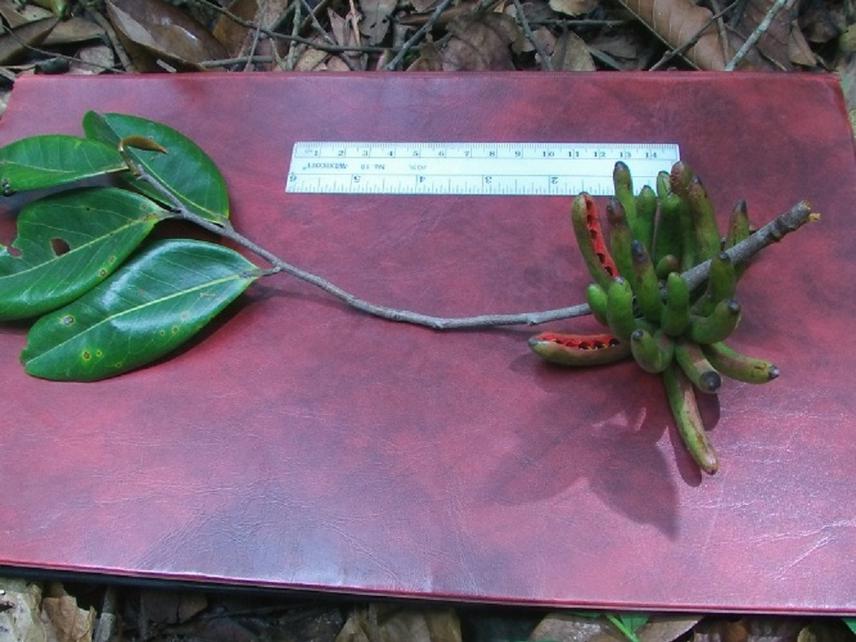Serge Alexis Kamgang
Other projects
8 Jan 2015
Influence of Forest-Savanna Ectone on Chimpanzee (Pan troglodytes ellioti) Socio-Ecology in Mbam Djerem National Park in Cameroon
15 Aug 2016
Effect of Habitat Variation on the Density of Chimpanzee (Pan troglodytes ellioti) in Mbam and Djerem National Park in Cameroon
6 Mar 2020
Enhancing the Protection of Chimpanzee (Pan troglodytes ellioti) and Sympatric Mammals Using Automatic Acoustic Recorders in Mbam-Djerem National Park, Cameroon
Chimpanzee surveys has been carried out in the core area of the Mbam and Djerem National Park (MDNP) and results always shown that chimpanzee are found mostly in the center and the north-east sectors of the park. In order to understand this distribution pattern and help park authority to design regular monitoring activities, the present project intend to characterize the nesting and the feeding sites of chimpanzee in their pretended suitable habitats. The project findings will be useful to confirm the suitable habitats for chimpanzee and determine the environmental covariates needed to model chimpanzee population viability in the MNNP.

Fruit of Xylopia aethiopica tree used as food by human who should cut down the tree before harvesting this product . ©S. Kamgang
Despite the biological importance of Mbam and Djerem National Park (MDNP), and the specificity of its ecosystems, we do not yet have enough data to understand the factor driving the socio-ecology and community structure of the Nigeria-Cameroon chimpanzee (Pan troglodytes ellioti, Matschie 1914) found this ecological entity.
Although previous research findings shown a great relationship between chimpanzee and types of habitat, mastering environmental characteristics of the nesting and the feeding sites of chimpanzee might help to improve the conservation strategies of this endangered species of great apes in MDNP. Furthermore, chimpanzee in MDNP share mostly colonizing forest and gallery forest mosaic habitat and data regarding the underlying processes that have generated this diversity remain sparse, but such information is a key component for conservation planning that will best conserve the standing diversity in this species. For example, behavioral diversity within and between populations of Bornean and Sumatran orangutans have been linked to ecological differences, attributes now integrated in the conservation planning of these populations (Schaik et al., 2009).
In Cameroon, especially in MDNP, Chimpanzees represent a unique opportunity to examine relationships between ecological variation and community structure at a fine geographic scale. The country harbors two of the four recognized chimpanzee subspecies (P. t. ellioti and P. t. troglodytes) and is also the boundary of the two major chimpanzee groupings (the western group that includes P. t. verus and P. t. ellioti and the central/eastern group that includes P. t. troglodytes and P. t. schweinfurthii) (Gonder et al., 2006). In Cameroon, P. t. troglodytes occupies habitats south of the Sanaga River, and P. t. ellioti occupies the region north of the Sanaga; and is subdivided into two genetically distinct populations: a population in the mountainous rainforests of western Cameroon and a second that occupies the forest-savanna gradient of central Cameroon (Mitchell et al., 2015a). This differentiation makes P. t. ellioti an ideal candidate for examining how environmental variation contributes to differences in the behavioral ecology (feeding and nesting) and community structure of chimpanzees.
A detailed understanding about how environmental conditions of the nesting and feeding sites of local chimpanzee populations vary can be particularly useful for understanding how they may be differentially affected by various factors, grazing, habitat loss, mining and even climate change. This information can also form a solid foundation for evidence-driven solutions for mitigating loss of local populations.